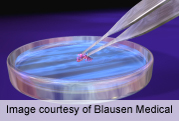
THURSDAY, Sept. 20 (HealthDay News) — A new study confirms that a once-promising discovery linking prostate cancer to a retrovirus called XMRV was the result of laboratory contamination.
The link was first proposed more than six years ago when XMRV’s “signature” was detected in genetic material derived from tissue samples taken from prostate cancer patients. It raised hopes that using antiviral drugs to block XMRV could prevent prostate cancer.
Follow-up studies, however, failed to find the same signature and researchers concluded that XMRV is an infection of human prostate cancer cells in laboratories and not of prostate cancer patients.
The current study was published Sept. 18 in the journal PLoS One.
In this new study, researchers conducted a forensic analysis of tissue samples and lab experiments — some dating back nearly a decade — and confirmed that the reported link between XMRV and prostate cancer was the result of laboratory contamination.
The contamination occurred when traces of XMRV from other cells being handled in the same laboratory found their way into the prostate tissue samples, the team of scientists concluded.
“Everything arose from this presumed contamination event,” study co-author Dr. Charles Chiu, assistant professor of laboratory medicine at the University of California, San Francisco, and director of the UCSF-Abbott Viral Diagnostics and Discovery Center, said in a university news release.
The researchers noted that they used newly developed technologies. They said if these scientific tools were available when the link between XMRV and prostate cancer was first suggested, it’s likely that the contamination would have been identified far sooner.
Previous research also detected XMRV among tissue samples taken from people with chronic fatigue syndrome. But the original study linking XMRV and chronic fatigue syndrome has since been retracted.
More information
The American Cancer Society has more about prostate cancer.

